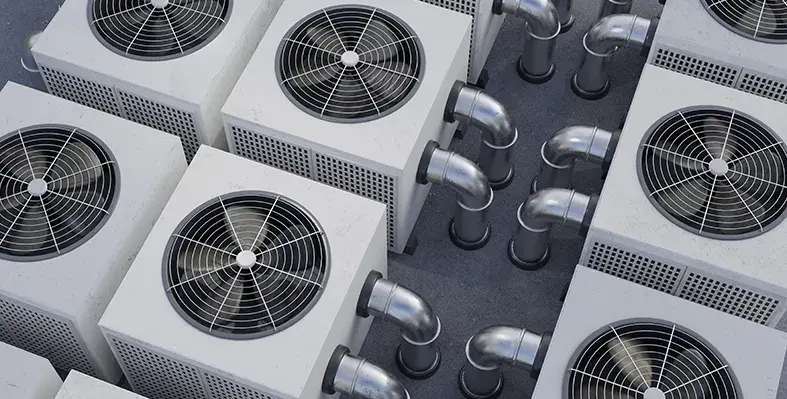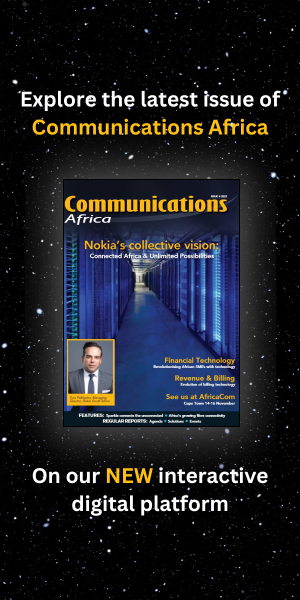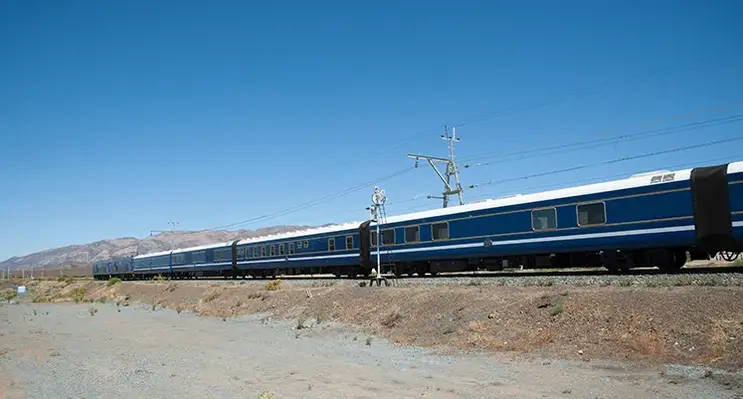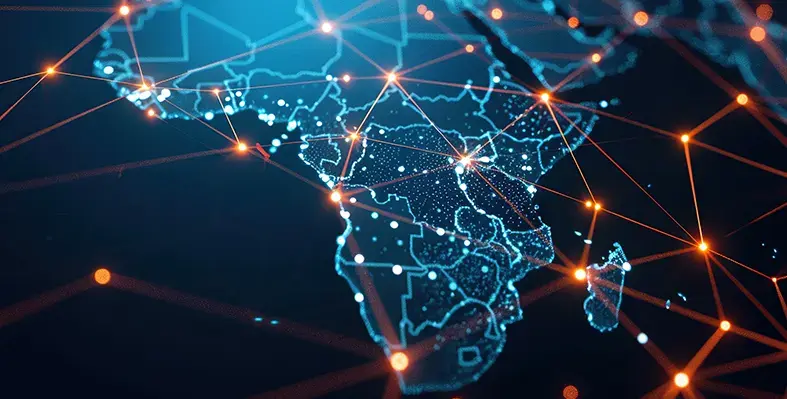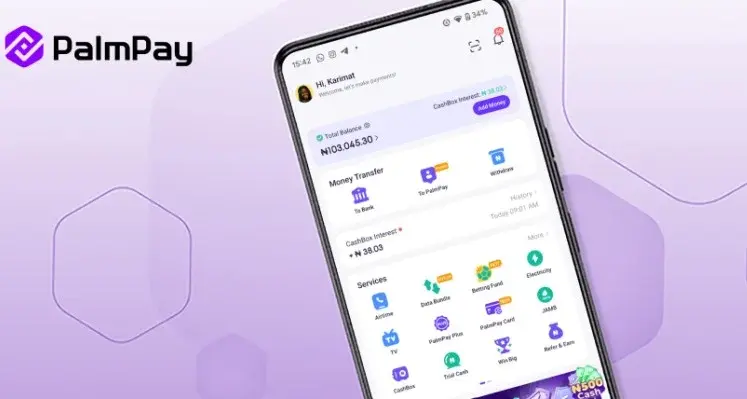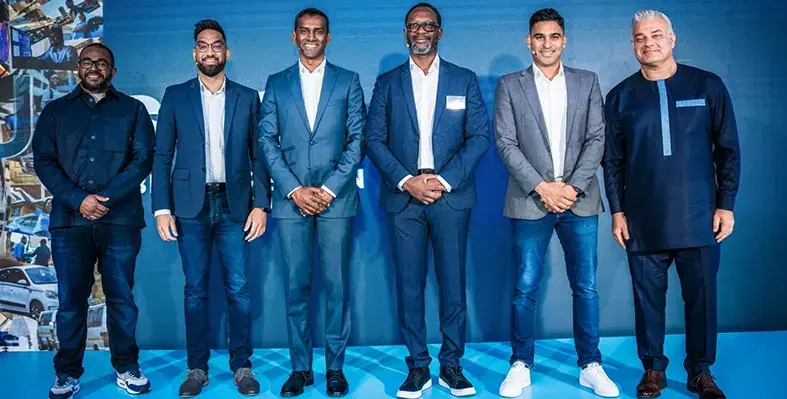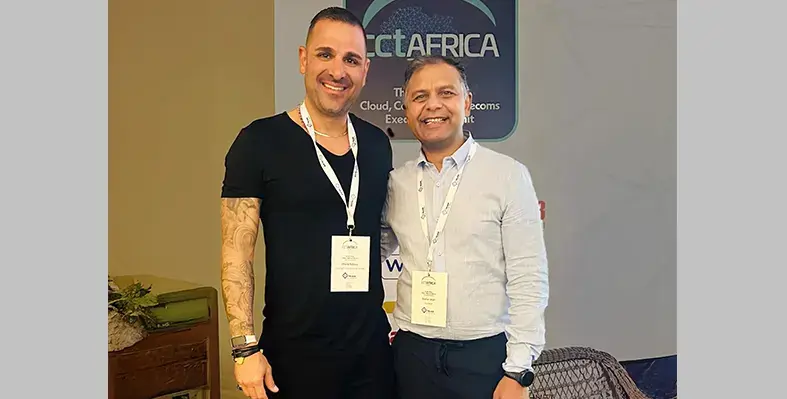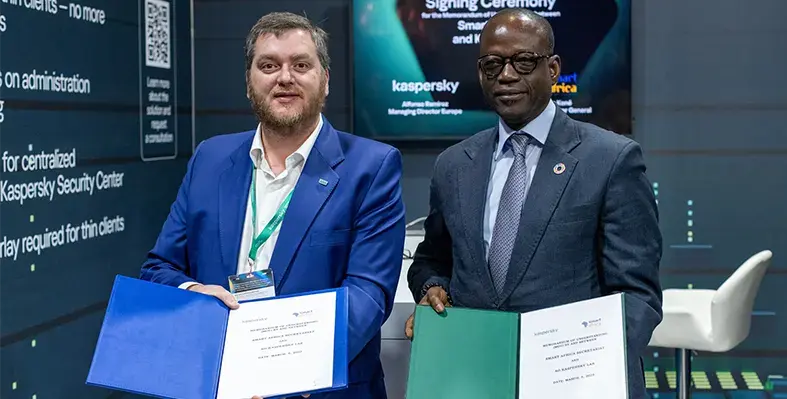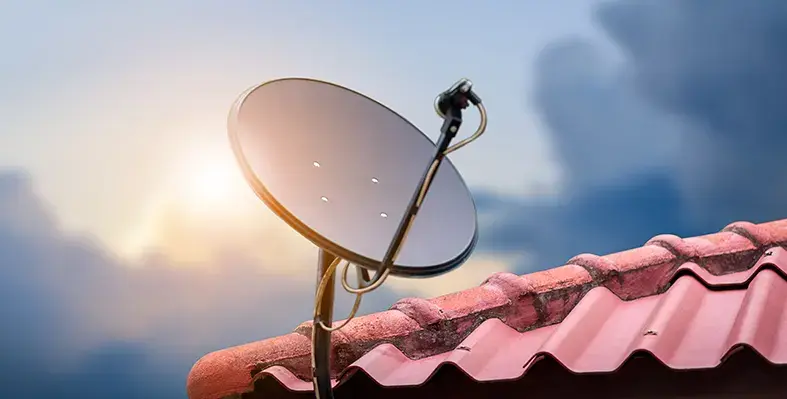In The Spotlight
Mitsubishi Electric expands African presence
Mitsubishi Electric Corporation has announced that its wholly owned subsidiary, Mitsubishi Electric Hydronics & IT Cooling Systems S.p.A. (MEHITS), headquartered in Bassano, Italy, has acquired a stake in Intramech Pty Ltd., a South African company specialising in sales and services for applied HVAC and IT cooling systems
By strengthening its partnership with Intramech, known for its strong sales, service, and engineering expertise in southern Africa, Mitsubishi Electric aims to expand both companies’ technical capabilities while enhancing its one-stop service offerings for applied HVAC and IT cooling systems.
Through the integration of Mitsubishi Electric’s product portfolio with Intramech’s local know-how, the two companies will complement each other in maintenance, equipment engineering, and system integration. Together, they will provide end-to-end services, including design-related technical support, sales, installation, operation, and maintenance, across southern Africa.
The collaboration comes at a time when data centre construction is surging globally, including across Africa, driving increased demand for IT cooling. Data centre operators are also seeking more comprehensive services covering installation, operation, and maintenance of cooling equipment.
According to Mitsubishi Electric, “The new partnerships will allow Mitsubishi Electric to strengthen its presence in southern Africa to deliver more comprehensive customer support and better meet the demand for applied HVAC and IT cooling system solutions, which is forecast to grow significantly in the regional market.”

SABEN supports around 450,000 students across 267 campuses and 46 colleges, delivering digital solutions designed to address the unique needs of the education sector
Empowering South Africa’s digital education future
Teraco, a Digital Realty company and leading provider of interconnection platforms and vendor-neutral colocation data centres, has announced a five-year extension of its support grant to the South African Broadband Education Networks (SABEN) through the Teraco Connect Foundation
Initially signed in 2020, the grant has been extended until 2030, bringing its total value to R17.5 million (approx. US$958,000). This renewed funding supports SABEN’s national initiative to eliminate bandwidth poverty in South Africa’s public schools and Technical and Vocational Education and Training (TVET) colleges.
SABEN, a non-profit organisation and a key component of South Africa’s National Research and Education Network (NREN), is the sole provider of broadband and connectivity services to public TVET colleges across the country. Currently, SABEN supports around 450,000 students across 267 campuses and 46 colleges, delivering digital solutions designed to address the unique needs of the education sector.
The Teraco Connect Foundation grant enables these institutions to access digital content more efficiently while laying the groundwork for long-term digital strategies.
Garth Scholtz, SABEN general manager, commented, “Thanks to Teraco’s generous support, we are equipped to continue improving the digital transformation potential of each institution, which SABEN can support adequately.
“Our ultimate beneficiaries are the students. We aim to position ourselves as a conduit to the various classroom technologies that can be built on our scalable platform of digital solutions through the NREN services offering or serving as a thought leader on related technologies. We see ourselves playing a large role in building future capacity in the sector, which would not only help the colleges to help themselves better, but hopefully retain the skills in the public sector where they are so desperately needed,” continued Scholtz.
Through the grant extension, SABEN will maintain a physical presence in Teraco’s Johannesburg, Cape Town, and Durban data centres. This presence connects colleges directly to Platform Teraco, providing access to a rich ecosystem of cloud and content service providers and enabling improved streaming, cloud-based learning, and remote education capabilities.
Jan Hnizdo, Teraco CEO, noted that the initiative reflects the company’s long-term vision for the education sector.
“The Teraco Connect Foundation sees the grant as an investment in the future of this country at a time when all sectors are facing significant challenges. As a leading data centre infrastructure provider, we are proud to invest in education, one of the most important cornerstones to secure the future growth and development of all South Africans.”
Scholtz emphasises the importance of collaboration between education and industry.
“Collaboration with industry is key, and the grant extension from Teraco will assist us in meeting the evolving digital requirements of all the institutions. South Africa’s skills shortage cannot be addressed unless our education system produces a labour force with the right skills to meet the industry’s demand.
“Poverty and inequality can never be eliminated unless the next generation of previously disadvantaged citizens is economically empowered. The role of all these educational institutions will play a significant role and, as SABEN, we need to ensure that this journey is fully enabled.”
Reliable Labeling: your data centre's shield against errors
In data centres, uptime is crucial. Uninterrupted operation is essential for all critical services. A key factor in maintaining this, often underestimated, is a standardised and reliable identification system for all infrastructure components
Discover how a leading automotive manufacturer revolutionised their operations and minimised risks by implementing a robust identification system. Learn how Brady's innovative labeling solutions delivered clearer infrastructure, fewer errors, and rock-solid reliability.
The Challenge: reducing downtime risks
Datacentre professionals constantly aim for high service levels. A significant risk to continuous operation is human error, particularly disconnecting the wrong cable. The complexity of modern datacentres, with dense cabling, makes this risk higher. To minimise the risks of incorrect cable disconnection, clear, reliable, and consistently applied labels for racks, servers, and cables are vital.
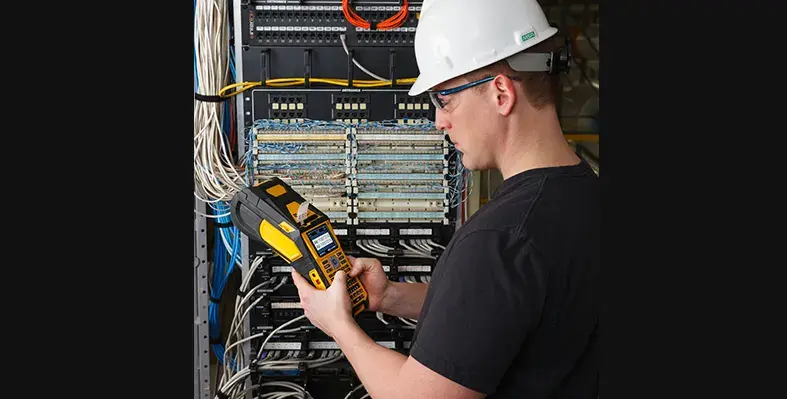 The solution: durable labels and efficient processes
The solution: durable labels and efficient processes
One of important automotive manufacturer recently addressed this by implementing a comprehensive identification approach. They used industrial-grade labels designed for datacentre demands. These labels, like Brady's B-425, B-427, and B-461, use specially developed materials and adhesives, ensuring they stay attached even to curved surfaces like UTP cables.
Beyond the labels, the solution included advanced design and printing capabilities. Brady Workstation label design apps let technicians create and customise labels easily from various devices. For on-site printing, the handheld M610 Label Printer is practical. For larger volumes, the BradyPrinter i7100 Industrial Label Printer provides efficient batch printing.
Crucially, the implementation included on-site consulting to help standardize labels and support the datacentre's overall identification strategy. This ensured the new labeling system integrated smoothly with existing operations.
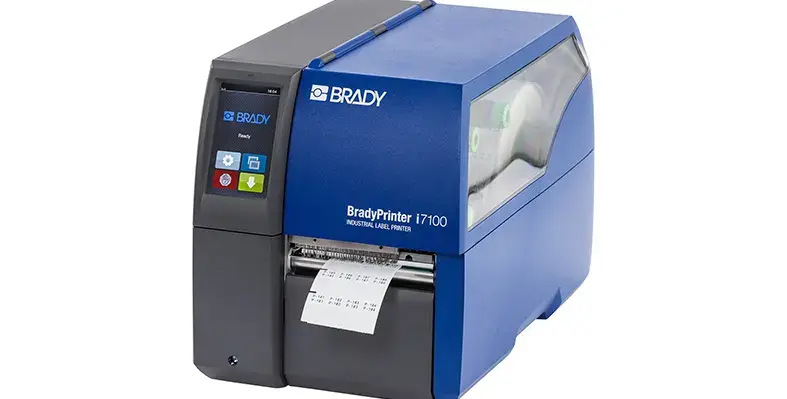
Results: preventing errors and enhancing uptime
Brady labels and identification solutions have delivered clear benefits. By ensuring labels remain securely attached, the risk of cable patching mistakes has significantly decreased. This directly contributes to improved datacentre uptime and service levels. Additionally, the streamlined process for designing, printing, and applying labels has made standardisation practical and easy to implement.
In an industry where uptime is crucial, a reliable identification system is not just good practice; it's one of the fundamental elements of operational resilience.
Discover how Brady can optimise your data centre's uptime. Find out more about dedicated identification and labelling solutions for datacenters >>
Ready to enhance your datacentre's reliability? Speak with a Brady expert to discuss your data centre's specific needs.
Will Meta’s new cable redefine East Africa’s connectivity?
Meta has entered into an agreement with Safaricom to bring its second submarine cable to Kenya, marking a major advancement in regional connectivity
Through its subsidiary, Edge Network Services Limited, Meta has appointed Safaricom as the landing partner for a new high-capacity submarine cable connecting Oman and Kenya. The collaboration aims to enhance internet speeds, improve network resilience, and support the growing demand for digital services across the region.
“This deal is a significant strategic milestone for us at Safaricom as we mark 25 years and signals our readiness to transition into a fully-fledged tech company in line with our vision 2030 strategy. It positions us to meet the surging demand for high-capacity, low-latency connectivity which is critical for powering economic growth, cloud adoption, and digital innovation,” said Peter Ndegwa, CEO, Safaricom.
The partnership strengthens Safaricom’s long-term commitment to providing faster, more resilient, and future-proof connectivity in alignment with its ambition to become Africa’s leading purpose-led technology company by 2030. It further reinforces the company’s role in driving digital transformation, empowering enterprises, communities, and consumers with the high-speed connectivity required to compete in a digital economy.
The Under-Sea Cable System will be fully financed by Edge, with locally licensed operators in both Kenya and Oman contracted to manage the cable segment within their respective territorial waters, as well as the associated in-country infrastructure.
The deal signals Safaricom’s readiness to offer more than voice, data and mobile money services in line with its vision 2030 to be Africa’s leading purpose-led technology company.
MEA 5G revolution: connecting futures
Nokia has released the latest edition of its Mobile Broadband Index Report 2025, offering an in-depth look at the evolving mobile broadband ecosystem across the Middle East and Africa (MEA)
The report highlights the region’s accelerating transition towards 5G connectivity, projecting that by 2030, 5G will dominate a substantial share of mobile subscriptions and data traffic. It also emphasises how 5G investments are fueling digital innovation and driving economic growth across MEA.
According to Nokia’s new research, by 2030, 82% of connections will operate on 4G or 5G networks, underscoring the shift towards data-driven usage as smartphones become more widely accessible. 5G is also emerging as a vital enabler for IoT, smart cities, and enterprise solutions. Its growing adoption stems from increased operator investments and government-led digital transformation programs, positioning it as a cornerstone of future connectivity. By 2030, MEA’s 5G subscriptions are projected to reach 605 million, with 53% of total data traffic generated by 5G. In the Gulf Cooperation Council (GCC), 91% of subscriptions are expected to be on 5G, the highest proportion in the region.
The report also reveals the rapid expansion of 5G Fixed Wireless Access (FWA), with its market share expected to rise from 15% in 2023 to 35% by 2030. This marks a major shift towards advanced fixed wireless solutions, driven by the growing maturity of 5G networks across MEA. These networks provide the infrastructure necessary to deliver high-speed broadband to homes and businesses without relying on traditional wired connections. The uptake of 5G FWA offers faster deployment and reduced infrastructure costs compared to fiber, making it a compelling solution for expanding internet access and improving regional connectivity.
“Significant investments in 5G technology are being made by operators in the MEA region, which will serve as the engine to enable IoT, smart cities, and enterprise solutions. These advancements are expected to drive transformative use cases such as autonomous transportation, smart agriculture, and advanced healthcare services powered by real-time data analytics. Additionally, the integration of 5G with edge computing and AI will unlock new opportunities for industries to optimise operations, enhance productivity, and deliver innovative customer experiences,” said Mikko Lavanti, senior vice-president, mobile networks, MEA, Nokia.
Can satellite unlock Africa’s remote connectivity?
Across Africa, industries working in remote and hard-to-reach areas continue to face one pressing challenge: reliable, high-speed connectivity
Mining operations in rural regions, offshore oil platforms, government outposts, and agricultural enterprises often function in locations where fibre deployment is not practical, mobile coverage is inconsistent, and microwave networks are expensive or slow to deploy. For these sectors, data access is not a luxury but a vital operational requirement.
NEC XON, in partnership with Eutelsat OneWeb, is tackling these challenges through an integrated approach. By combining enterprise-grade Low Earth Orbit (LEO) satellite connectivity with innovative last-mile solutions, the company is building a model for connectivity in Africa’s most demanding environments.
Understanding the challenges of remote operations
Enterprises located far from urban centres face unique connectivity barriers that can directly affect productivity, safety, and growth. Infrastructure gaps remain a major obstacle as fibre and traditional terrestrial networks rarely extend to these sites. Building new infrastructure can take months and cost millions. In industries such as mining, oil and gas, and logistics, operational continuity is crucial. Even short downtime periods can disrupt safety monitoring, halt production, and compromise regulatory compliance.
These industries also require flexibility and resilience. Temporary sites or mobile operations demand scalable solutions that can adapt as the business moves or grows. In areas with inconsistent fibre or mobile coverage, dependable backup connectivity is essential. Without redundancy and resilience, remote operations risk costly disruptions and missed opportunities.
“These challenges require a different approach to connectivity,” commented Wally Beelders, executive: Communications Solutions at NEC XON. “It’s not just about putting a satellite terminal somewhere. It’s about creating a fully integrated, end-to-end service that meets the operational, regulatory, and security requirements of the sectors we serve.”
To strengthen this offering, NEC XON integrates bundled last-mile solutions such as point-to-point, point-to-multipoint, and Super Wi-Fi networks. Carel Coetzee, CEO of NEC XON, explained, “What sets us apart from other distributors is a product portfolio that allows for integrated last-mile solutions. We can stack this on the back end of your OneWeb, which serves as the backhaul. We bundle these solutions together to provide more comprehensive coverage, connecting schools, hospitals, clinics, communities… at a more affordable rate.”
Key differentiators for African industries
The combined NEC XON and OneWeb approach is well suited to Africa’s diverse environments:
-
Fully integrated backhaul and last-mile solutions, providing end-to-end connectivity from satellite terminal to user
-
Rapid deployment, with installations completed within days to bring critical operations online almost immediately
-
Pan-African presence, with NEC XON’s strong footprint across the continent enabling fast response times, local support, and culturally informed engagement
-
Enterprise and carrier-grade reliability, designed for mission-critical applications rather than consumer services
-
Super Wi-Fi technology, offering a coverage radius of up to 1.7 km for enterprise campuses, rural communities, and mobile operations
Through this integration, NEC XON delivers comprehensive coverage in regions once considered inaccessible or too costly to connect. Enterprises and communities can now rely on affordable, dependable connectivity where they need it most.

AfDB and Algeria unite to scale startups and SMEs, fostering innovation, trade, and youth-driven growth in Africa
AfDB, Algeria partner to boost African startups
The African Development Bank (AfDB) and Algeria’s Ministry of Knowledge Economy, Startups, and Micro-Enterprises have agreed to deepen cooperation to accelerate the growth of startups and small and medium-sized enterprises (SMEs) across Africa
The announcement came at the close of the fourth edition of the Intra-African Trade Fair (IATF 2025), hosted in Algiers from 4 to 10 September. Leading the Bank’s delegation, Ousmane Fall, Acting Director of the Industrial and Trade Development Department, highlighted the AfDB’s central role in unlocking finance for African businesses. “Supporting small and medium-sized enterprises and startups is one of the key pillars of our work, as defined in the Four Cardinal Points of the Bank group’s new president, Dr Sidi Ould Tah,” said Fall. He added, “The Bank will support SMEs through an innovative approach that combines new financing instruments, advisory services, and policy reforms to promote their emergence across the continent.”
Strengthening private sector engagement
Ahead of discussions with Minister Noureddine Ouadah, the Bank delegation met with Algeria Venture, the state-backed startup accelerator. Both sides agreed to enhance cooperation, particularly by linking Algerian startup funding mechanisms with leading private equity and venture capital funds. They also confirmed plans to jointly take part in the African Startup Conference, scheduled in Algiers from 6 to 9 December 2025, which aims to promote innovation, strengthen networks, and attract investment on a continental scale.
Closing IATF 2025, Minister Ouadah announced the launch of a new investment fund for African startups, an initiative championed by Algerian President Abdelmadjid Tebboune, underlining Algeria’s commitment to prioritising youth and innovation in shaping Africa’s economic future.
The AfDB’s Non-Sovereign Operations team also presented financing solutions for the private sector while pursuing new strategic collaborations. Engagements with firms such as Solewant Group, a Nigerian steel and coatings leader, illustrated the Bank’s interest in high-impact African companies.
Showcasing innovation and entrepreneurship
The AfDB further contributed to several IATF sessions, including one organised with UNDP’s Timbuktoo initiative and the African Union on “Building an Enabling Startup Ecosystem,” as well as a discussion hosted by Afreximbank’s African Research and Innovation Centre. These platforms enabled the Bank to highlight its Innovation and Entrepreneurship Lab and its flagship ENNOVA programme, which helps entrepreneurs expand their operations and access new opportunities.
The IATF Advisory Council, in which the Bank is an active participant, announced that Lagos, Nigeria, will host the fifth edition of the fair in 2027. Reaffirming its commitment, the AfDB stressed that trade, entrepreneurship, and innovation remain central to driving inclusive growth and industrial transformation across the continent.

GeniWatt expands footprint with FG Wilson gensets across Guinea Bissau and Cameroon’s telecom and healthcare sectors. (Image source: GeniWatt)
Is GeniWatt powering Africa’s future?
France-based GeniWatt has enjoyed a string of Africa successes so far in 2025, most recently completing a genset installation at a telecommunications site in Guinea Bissau
The company supplied a P22 generator set, in partnership with Synergy, for telecoms group MTN in the West African country.
The FG Wilson P22 and P33 gensets are “perfectly suited” to telecoms towers, the company noted in a statement, citing soundproof enclosures, safety options, large tanks and telemetry, with full customisation available.
Founded in 2011 by Damien Fétis, president of Secodi, GeniWatt was specially created for the distribution of FG Wilson generators in France, but has extended its footprint deeply into Africa.
West Africa, in particular, has proved fruitful ground so far during 2025.
That includes a string of orders from Cameroon, working together with another local partner, DM Approtech.
Together, the two companies have supplied generators to various groups and associations based in Yaoundé, the nation’s capital.
It includes a 110kVA FG Wilson emergency generator for the Association pour la Promotion de la Femme building, and another emergency generator with its source inverter for the Centre de Formation Sorawell, a separate entity created by the Association pour la Promotion de la Femme.
In addition, the two companies supplied a P22 generator for a new maternity unit financed by the Compassion Sans Frontière association.
Last year, GeniWatt also played a key role in a major dam project in Cameroon, modifying an FG Wilson open P150 for installation at the Nachtigal hydroelectric plant, which sits about 65 kilometres north-east of the capital.
The project included automatic load bank and oil top-up, dual starter with dual battery sets, NFE37-312 GSS2 compliance for safety, a tank with two electric pumps and a manual pump, conducted again alongside DM Approtech, with supervision from EDF to validate the specifications.
Nachtigal is a key strategic project for Cameroon, operated by a consortium that includes energy giant EDF.
The dam’s first turbine is now operational, with full commissioning expected during 2025.
With an expected total capacity of 420 MW, it will eventually cover nearly 30% of Cameroon’s energy needs with clean, available and inexpensive electricity.

NETSCOUT’s report shows Morocco, Tunisia, Libya, and Algeria facing intensifying DDoS threats on telecoms in early 2025
Are DDoS attacks escalating across North Africa?
NETSCOUT SYSTEMS, INC., a leading provider of observability, AIOps, cybersecurity, and distributed denial of service (DDoS) protection solutions, has released its latest global threat intelligence report highlighting the intensification of DDoS attacks across North Africa
The study shows that telecommunications operators, both wired and wireless, were the primary targets in Morocco, Tunisia, Libya, and Algeria during the first half of 2025.
Northern Africa by the numbers
Morocco registered more than 75,600 DDoS incidents, making it the second highest in Africa for attack volume after South Africa. Tunisia experienced the continent’s longest single DDoS campaign, lasting nearly seven hours (418.68 minutes), while also recording the highest bandwidth peak at 756.61 Gbps. Libya faced the second-longest single attack in the region at 242.6 minutes, with the highest attack complexity recorded, involving 23 vectors in one incident. Algeria, although recording fewer attempts (186), still endured significant threats, with peaks of 432.02 Gbps in bandwidth and 41.05 Mpps in throughput.
“Across the region, threat actors consistently targeted the telecommunications sector, unleashing high-volume, multi-vector attacks that disrupted connectivity and threatened service reliability,” commented Bryan Hamman, regional director for Africa at NETSCOUT. “Overall though, the results show an interesting mix of results when compared to our last Threat Intelligence Report, which looked at the second half of 2024.
“For example, Morocco continues to lead North Africa in the number of DDoS strikes sustained, with the country’s attack count rising from around 69,800 to over 75,600. Tunisia shifted from higher volumes - just short of 8,700 in 2H 2024 - to fewer attacks at 6,346 between January and July 2025, but contrastingly with record-breaking peaks in bandwidth and duration.
“Libya, however, more than doubled its attack volume, from just over 1,600 to nearly 3,750 incidents. Algeria saw fewer events but continued to face severe peak magnitudes.”
DDoS activity across the region
In Morocco, the majority of attacks targeted wireless telecommunications carriers, with 64,517 incidents. Wired providers followed with 1,342 incidents, along with research and development organisations in Social Sciences and Humanities (53), and shoe retailers (41). Common vectors included TCP ACK, DNS amplification, and SYN/ACK amplification. The largest recorded attack in the country reached 158.88 Gbps in bandwidth and 17.74 Mpps in throughput.
Tunisia’s attacks primarily struck wired telecommunications providers, with 5,288 incidents, followed by wireless carriers and the hospitality sector (excluding casino hotels and motels). Despite a lower number of attacks compared with 2H 2024, Tunisia endured the largest single DDoS assault in North Africa, with peaks of 756.61 Gbps and 49.51 Mpps, and an aggregate surge hitting 27 Tbps in April 2025. The average duration of attacks also increased substantially, exceeding 400 minutes in some cases.
In Libya, although peak bandwidths were smaller at 113.15 Gbps, attackers deployed 23 different vectors in a single incident — the most complex attack in the region. Wireless telecommunications providers were the primary targets, with 2,519 attacks, but unusual attempts against gasoline stations were also recorded.
Algeria reported 186 DDoS incidents in 1H 2025, the lowest among the four countries. However, the scale of attacks was significant, with peaks hitting 432.02 Gbps. Both wired and wireless telecommunications operators were the main targets, with DNS amplification identified as the most common attack method.
“North Africa is a prime example of how rapid digital growth attracts malicious activity,” adds Hamman. “The first half of 2025 shows that attackers are not only increasing their volumes in countries like Morocco, but are also using more sophisticated multi-vector methods in Libya and high-magnitude events in Tunisia. Even Algeria, with relatively fewer incidents, cannot ignore the scale of its largest attacks.
“The lesson is clear: organisations must prepare for the scale and sophistication of today’s threats,” he concluded.
NETSCOUT maps the DDoS landscape through passive, active, and reactive vantage points, providing unique visibility into global attack activity. The company protects two-thirds of the routed IPv4 space, securing network edges that carried global peak traffic exceeding 800 Tbps in the first half of 2025. It tracks tens of thousands of daily DDoS attacks by monitoring multiple botnets and DDoS-for-hire services that exploit millions of compromised devices.







